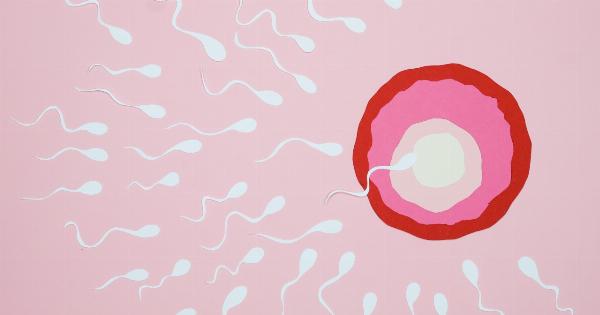In the world of assisted reproductive technology, in vitro fertilization (IVF) has revolutionized the way couples struggling with infertility can conceive children.
IVF involves combining eggs and sperm in a laboratory dish, allowing fertilization to occur outside of the body. Once the fertilized eggs, or embryos, have developed for a few days, they are typically transferred to the woman’s uterus in hopes of achieving a successful pregnancy.
Understanding the IVF Process
The IVF process is a carefully orchestrated series of procedures and requires precise timing for optimal results. Typically, the woman undergoes ovarian stimulation to produce multiple eggs, which are then retrieved through a minor surgical procedure.
Following this, the eggs are fertilized with sperm to create embryos, which are kept in a laboratory for a period of time to allow for development.
The Role of Embryo Development in IVF Success
Embryo development plays a critical role in the success of IVF. Embryos need time to grow and develop before they can be transferred to the uterus. However, determining the optimal timing for transfer is not always straightforward.
Early Embryo Transfer and Its Effects
In the early days of IVF, embryos were typically transferred back to the uterus on day two or three after fertilization.
This early transfer was based on the belief that the uterus offered a more optimal environment for embryo development than the laboratory.
However, studies have shown that transferring embryos too early may actually decrease the chances of a successful pregnancy.
At this stage, embryos are still in the early stages of development and may not have reached the blastocyst stage, which is associated with higher implantation rates. Additionally, the uterine environment may not be receptive enough for successful implantation to occur.
Extended Embryo Culture and Improved Pregnancy Rates
As the field of IVF has advanced, so too has our understanding of embryo development. Researchers have discovered that allowing embryos to develop for an extended period of time in the laboratory can lead to improved pregnancy rates.
The extended culture approach involves growing embryos in the laboratory for five to six days until they reach the blastocyst stage. This additional time allows for more accurate selection of the best-quality embryos for transfer.
By only transferring embryos that have reached the blastocyst stage, the chances of successful implantation and pregnancy are significantly increased.
Benefits of Delayed Embryo Transfer
Delayed embryo transfer offers several benefits for couples undergoing IVF. Firstly, the extra days of embryo culture allow for more accurate selection of the best-quality embryos, ultimately increasing the chances of success.
The blastocyst stage is associated with higher implantation rates, so transferring embryos at this stage improves the odds of achieving a pregnancy.
Additionally, delayed embryo transfer allows the fertility clinic to closely monitor the development of the embryos. This enables them to identify any potential issues or abnormalities that may affect the chances of successful implantation.
By selecting embryos with the highest chance of success, couples can maximize their chances of achieving a healthy pregnancy.
The Role of Embryo Freezing in Delayed Transfer
Delayed embryo transfer often involves freezing the embryos at the blastocyst stage for future use. This allows for more flexibility in timing the transfer, as the embryos can be thawed and transferred at a later date.
It also provides couples with the option of multiple transfer attempts without undergoing another full IVF cycle.
This freeze-all approach has been particularly beneficial for women with conditions such as polycystic ovary syndrome (PCOS) or a higher risk of ovarian hyperstimulation syndrome (OHSS).
By delaying the transfer and freezing the embryos, these women can avoid the potential risks associated with a fresh embryo transfer and have a higher chance of a successful outcome.
What Does the Research Say?
Multiple studies have supported the notion that delaying embryo transfer in IVF can improve pregnancy rates.
One study published in the New England Journal of Medicine compared the pregnancy rates of women who received blastocyst transfers with those who had day-three transfers. The results showed a significantly higher pregnancy rate in the blastocyst group.
Other research has also shown that delayed transfer improves not only pregnancy rates but also live birth rates.
A study published in the Journal of the American Medical Association found that women who had blastocyst transfers had a higher chance of achieving a live birth compared to those with day-three transfers.
Factors to Consider
While delayed transfer has shown promising results, it is important to note that it may not be suitable for all patients.
Factors such as the woman’s age, the quality of the embryos, and the presence of any underlying infertility conditions should be taken into account when determining the best course of action.
Additionally, the decision to delay transfer should be made in consultation with a reproductive endocrinologist or fertility specialist.
These experts can evaluate the individual case and provide tailored recommendations based on the specific circumstances.
The Future of IVF
As technology continues to advance, so too will our understanding of embryo development and the IVF process.
Researchers are constantly striving to improve pregnancy rates and reduce the emotional and financial burdens associated with infertility treatments. Delaying embryo transfer is just one of many advancements that have resulted in improved outcomes for couples pursuing IVF.
As the field evolves, it is important for individuals and couples struggling with infertility to stay informed and work closely with their healthcare providers to explore all available options.
With continued advancements, the dream of starting a family can become a reality for more and more couples.






























